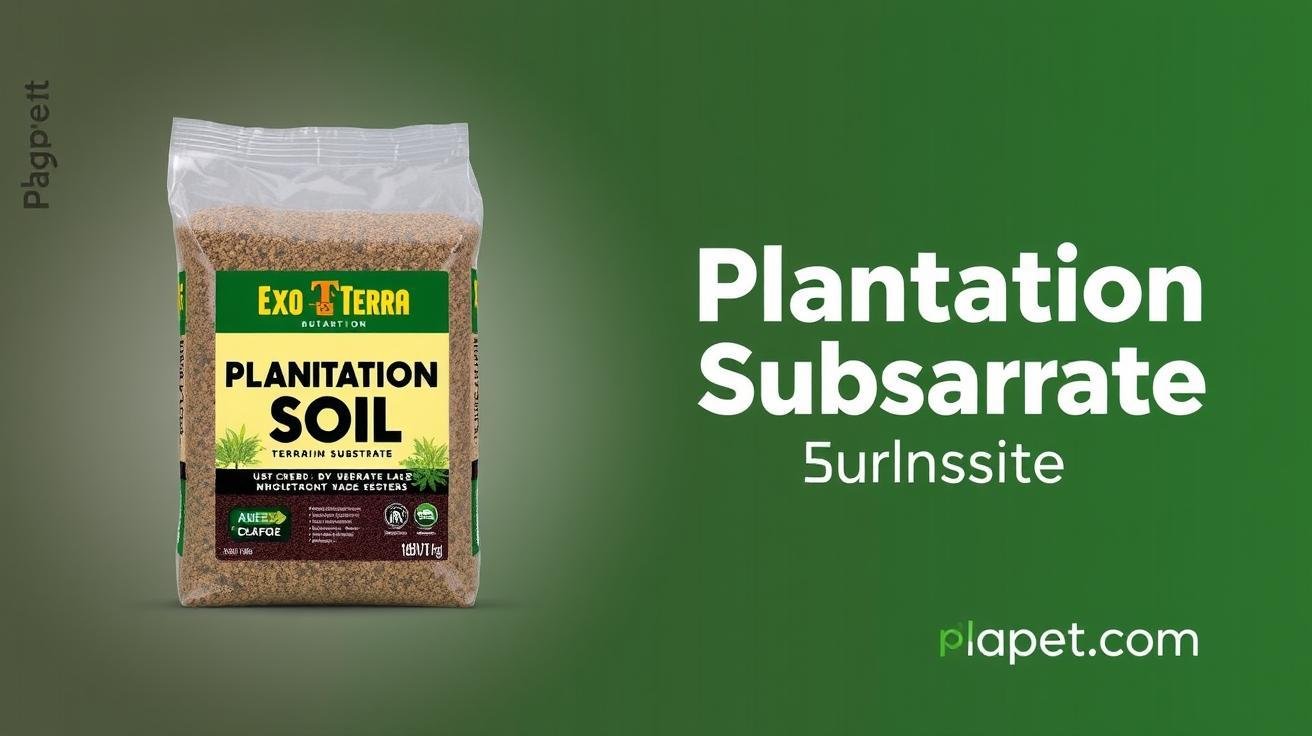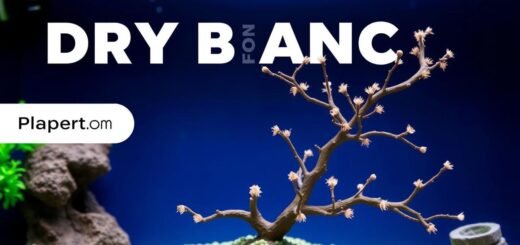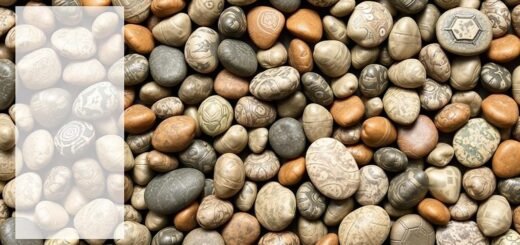Exo Terra Plantation Soil Review: Is It Worth Buying?

Estimated reading time: 8 minutes
Key Takeaways
- Exceptional Humidity Control: The Exo Terra Plantation Soil is made from hygroscopic coconut husk, making it a superior choice for increasing and maintaining humidity in tropical and subtropical terrariums.
- Promotes Natural Instincts: Its soft, fine texture is perfect for reptiles and amphibians that love to dig, burrow, or nest, helping to reduce stress and encourage natural behaviors.
- 100% Natural and Safe: This is a completely natural, biodegradable substrate free from harmful chemicals, making it safe for a wide range of sensitive species, including frogs, salamanders, and invertebrates.
- Ideal for Bioactive Setups: Beyond just being a substrate, it’s also nutritional for live plants, serving as an excellent foundation for creating a thriving, self-sustaining bioactive vivarium.
Table of Contents
- Introduction: The Foundation of a Healthy Terrarium
- Our Verdict at a Glance
- Deep Dive: Key Features & Benefits
- What We Liked
- Potential Drawbacks
- Who Should Buy Exo Terra Plantation Soil?
- Comparison to Alternative Substrates
- Frequently Asked Questions
- Final Thoughts and Recommendation
Introduction: The Foundation of a Healthy Terrarium
As dedicated keepers of reptiles and amphibians, we know that creating the perfect habitat is more than just a hobby—it’s a science and an art. The single most important element that forms the literal foundation of a healthy terrarium is the substrate. It’s not just dirt; it’s the key to maintaining proper humidity, enabling natural behaviors, and ensuring the overall well-being of our cold-blooded companions. Finding a substrate that is safe, effective, and natural can be a daunting task. Many products on the market are dusty, contain harmful additives, or fail to hold the moisture necessary for tropical species.
This is where our review of the Exo Terra Plantation Soil Terrarium Substrate, 8 Quarts comes in. This product claims to be a game-changer for enthusiasts looking to create lush, natural terrarium set-ups. Made from compressed coconut husk fiber, it promises to be a 100% natural substrate that not only boosts humidity but also stimulates the instinctual digging and burrowing behaviors that are crucial for many species’ mental and physical health. Today, we’re putting those claims to the test. We’ll explore its features, benefits, potential downsides, and ultimately help you decide if this is the right foundation for your pet’s world.
- 100-Percent natural substrate for tropical terrariums
- Increases humidity
- Stimulates natural digging and burrowing behavior
Our Verdict at a Glance
After a thorough evaluation, we can confidently say that the Exo Terra Plantation Soil Terrarium Substrate is an outstanding choice for keepers of most tropical and forest-dwelling reptiles and amphibians. Its ability to retain moisture and release it slowly makes maintaining high humidity levels almost effortless. The fine, soil-like texture is perfect for animals that need to burrow to feel secure, and its natural composition means you don’t have to worry about toxins. While it requires proper management to prevent mold in stagnant conditions, its benefits for creating a healthy, naturalistic, and even bioactive environment far outweigh this minor caveat. For frogs, salamanders, geckos, and many snakes, this substrate is a top-tier option that we highly recommend.
Deep Dive: Key Features & Benefits
Let’s break down exactly what makes this substrate stand out. It’s not just about what it’s made of, but how its properties translate into a better life for your pet.
100% Natural Substrate from Coconut Husk
The foundation of this product is its composition: compressed coconut husk fiber from plantations in tropical Asia. This means it’s a renewable and biodegradable resource, making it an eco-friendly choice. More importantly for our pets, it’s completely free of salts, chemicals, pesticides, and artificial additives. For sensitive creatures like amphibians, which absorb substances through their skin, using a 100% natural substrate is not just a preference—it’s a necessity for their long-term health.
Increases Humidity in Terrariums
This is arguably the most significant benefit. The coconut fiber, also known as coir, is highly hygroscopic, meaning it absorbs and retains water exceptionally well. When you mist the terrarium, the Plantation Soil acts like a sponge, soaking up the moisture and then releasing it slowly into the air. This process naturally increases humidity in terrariums, creating the stable, moist environment that species from rainforests and tropical regions require to thrive, shed properly, and respire easily. It dramatically reduces the need for constant misting throughout the day.
Stimulates Natural Digging and Burrowing Behavior
In the wild, many reptiles and amphibians spend their time digging and burrowing to hunt, hide from predators, regulate their body temperature, or lay eggs. A bare glass floor or a hard, compact substrate prevents these essential behaviors, leading to stress. The Exo Terra Plantation Soil has a soft, loose, and soil-like consistency once expanded. This texture is perfect for encouraging these instincts. It stimulates natural digging and burrowing behavior, allowing your pets to create their own hides and feel more secure in their environment. A less-stressed animal is a healthier and more active animal.
Nutritional for Live Plants
For keepers interested in bioactive setups—miniature, self-sustaining ecosystems—this substrate is an excellent starting point. It provides a stable and airy medium for the roots of live plants to grow. While it’s not a fertilizer on its own, it retains water for the plants and provides a great structure for root systems. When combined with a drainage layer and leaf litter, it becomes the perfect base for a bioactive terrarium, where live plants help process waste and maintain humidity, creating an even more naturalistic and low-maintenance habitat.
What We Liked
- Excellent Expansion: The compressed brick format is space-saving and economical. A small brick expands significantly when water is added, providing a large volume of substrate.
- Soft and Safe Texture: The fine, soil-like texture is gentle on the delicate skin and feet of amphibians and reptiles, minimizing the risk of abrasions.
- Odor Absorption: Like many natural fibers, coconut husk is effective at absorbing and neutralizing odors, helping to keep the terrarium smelling fresh.
- Versatility: It can be used dry for more arid setups (though not recommended for true desert species), damp for temperate setups, or wet for tropical setups, making it quite versatile.
Potential Drawbacks
- Requires Proper Ventilation: Because it holds moisture so well, it can promote mold or fungal growth in terrariums with poor airflow. Ensuring adequate ventilation is key to preventing this.
- Can Attract Fungus Gnats: Like any damp organic medium, it can be an attractive breeding ground for fungus gnats. Introducing a clean-up crew (springtails and isopods) in a bioactive setup can completely solve this issue.
- Slightly Dusty When Dry: When first breaking apart the dry brick, it can be a bit dusty. It’s best to rehydrate it in a bucket or outdoors to minimize airborne particles.
Who Should Buy Exo Terra Plantation Soil?
This substrate is a must-have for a specific type of pet owner. You’ll find it indispensable if you keep:
- Tropical Amphibians: Think Dart Frogs, Tree Frogs, Toads, and Salamanders. Their need for high humidity and a soft, moist substrate makes this an ideal choice.
- Forest-Dwelling Reptiles: Species like Crested Geckos, Gargoyle Geckos, and Anoles that thrive in humid environments will benefit greatly.
- Burrowing Snakes and Lizards: Many snakes, such as Ball Pythons (especially for humidity boxes), and some lizards enjoy burrowing. This substrate allows them to do so safely.
- Invertebrates: Tarantulas, scorpions, and millipedes from humid regions will also thrive on this substrate.
- Bioactive Enthusiasts: Anyone looking to build a natural, planted vivarium will find this an excellent foundational component.
However, it is not suitable for desert species like Bearded Dragons or Leopard Geckos, as the high moisture retention can lead to respiratory infections and other health issues for them.
Comparison to Alternative Substrates
How does Exo Terra Plantation Soil stack up against other popular choices?
- Vs. Cypress Mulch: Cypress mulch also holds humidity well, but it can contain sharp splinters that could harm delicate animals. Plantation Soil is much softer and finer, making it a safer option, especially for amphibians.
- Vs. Sphagnum Moss: While excellent for boosting humidity, sphagnum moss alone doesn’t provide a good medium for burrowing or planting. It’s best used in conjunction with a base substrate like Plantation Soil.
- Vs. Reptile Carpet: Carpet is easy to clean but offers zero naturalistic value. It doesn’t hold humidity, prevents burrowing, and can harbor bacteria. Plantation Soil is far superior for creating a healthy, enriching environment.
- Vs. Sand: Sand is only suitable for true desert species and poses a significant impaction risk if ingested. Plantation Soil is digestible in small amounts and is designed for the opposite type of environment—one that requires high moisture.
Frequently Asked Questions
1. How do you prepare the Exo Terra Plantation Soil brick?
It’s incredibly simple. Place the compressed brick in a bucket or large container. Add the amount of warm water specified on the packaging (usually around 3-4 liters). The brick will begin to break apart and absorb the water, expanding to about 7-8 times its original size. After about 30 minutes, you can fluff it up with your hands. Squeeze out any excess water until it is damp but not soaking wet before adding it to the terrarium.
2. Is this substrate safe if my pet accidentally eats some?
Because it is a 100% natural fiber, small, accidental ingestions (like when catching prey) are generally not a cause for concern and will pass through the digestive system. However, like any particulate substrate, if an animal purposefully eats large amounts, it could lead to impaction. This is rare and usually points to an underlying health or husbandry issue, such as a calcium deficiency. To minimize risk, you can feed your animal in a separate container or on a small dish placed on top of the substrate.
3. How often should I replace the substrate?
This depends on your setup. In a standard terrarium, you should spot-clean for waste daily and perform a full substrate change every 2-3 months to prevent the buildup of bacteria. In a fully established bioactive setup with a clean-up crew of isopods and springtails, you may never need to do a full change, as the microfauna will process the waste for you. You would simply top up the substrate as needed.
4. Can I bake the substrate to sterilize it?
Yes, you can. While Exo Terra is a reputable brand and the substrate is generally clean, some keepers prefer to sterilize it for peace of mind. To do this, get the substrate damp (not wet) and spread it on a baking sheet. Bake at a low temperature (around 200°F or 95°C) for 20-30 minutes. This will kill off any potential hitchhikers like fungus gnat eggs or mold spores. Let it cool completely before adding it to the enclosure.
Final Thoughts and Recommendation
The Exo Terra Plantation Soil Terrarium Substrate, 8 Quarts, is more than just a base layer for your terrarium—it’s an essential tool for creating a thriving, natural habitat. Its superior ability to maintain humidity, combined with its soft texture that encourages natural burrowing, makes it one of the best substrates on the market for tropical and forest-dwelling reptiles and amphibians. It’s safe, natural, and provides the perfect foundation for a standard or bioactive setup.
While it requires mindful management of ventilation to prevent mold, this is a standard aspect of keeping high-humidity enclosures. The immense benefits it provides for your animal’s health, comfort, and enrichment make it an easy choice to recommend. If you’re looking to upgrade your pet’s environment and simplify your humidity control routine, this is the substrate you’ve been searching for.
Ready to transform your terrarium into a naturalistic paradise? Click the link below to check the current price and get your Exo Terra Plantation Soil on Amazon!




